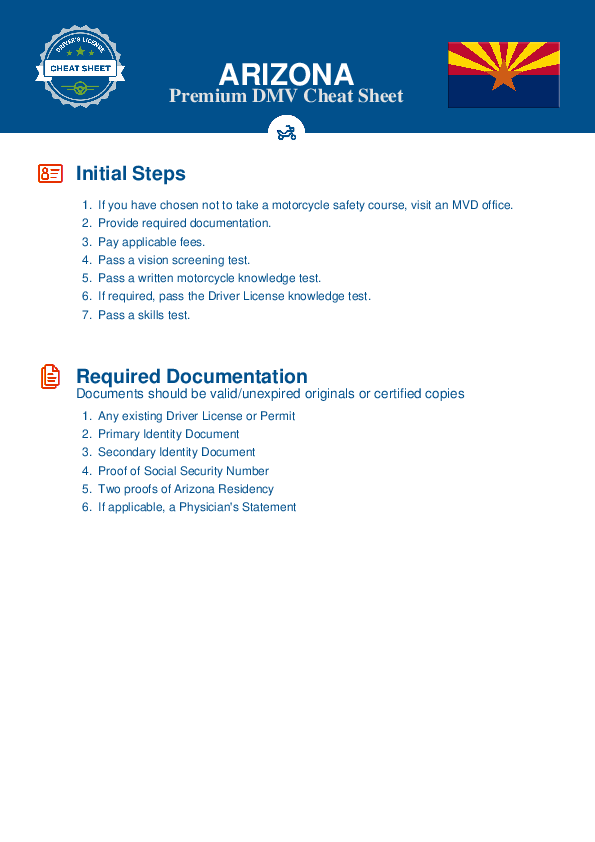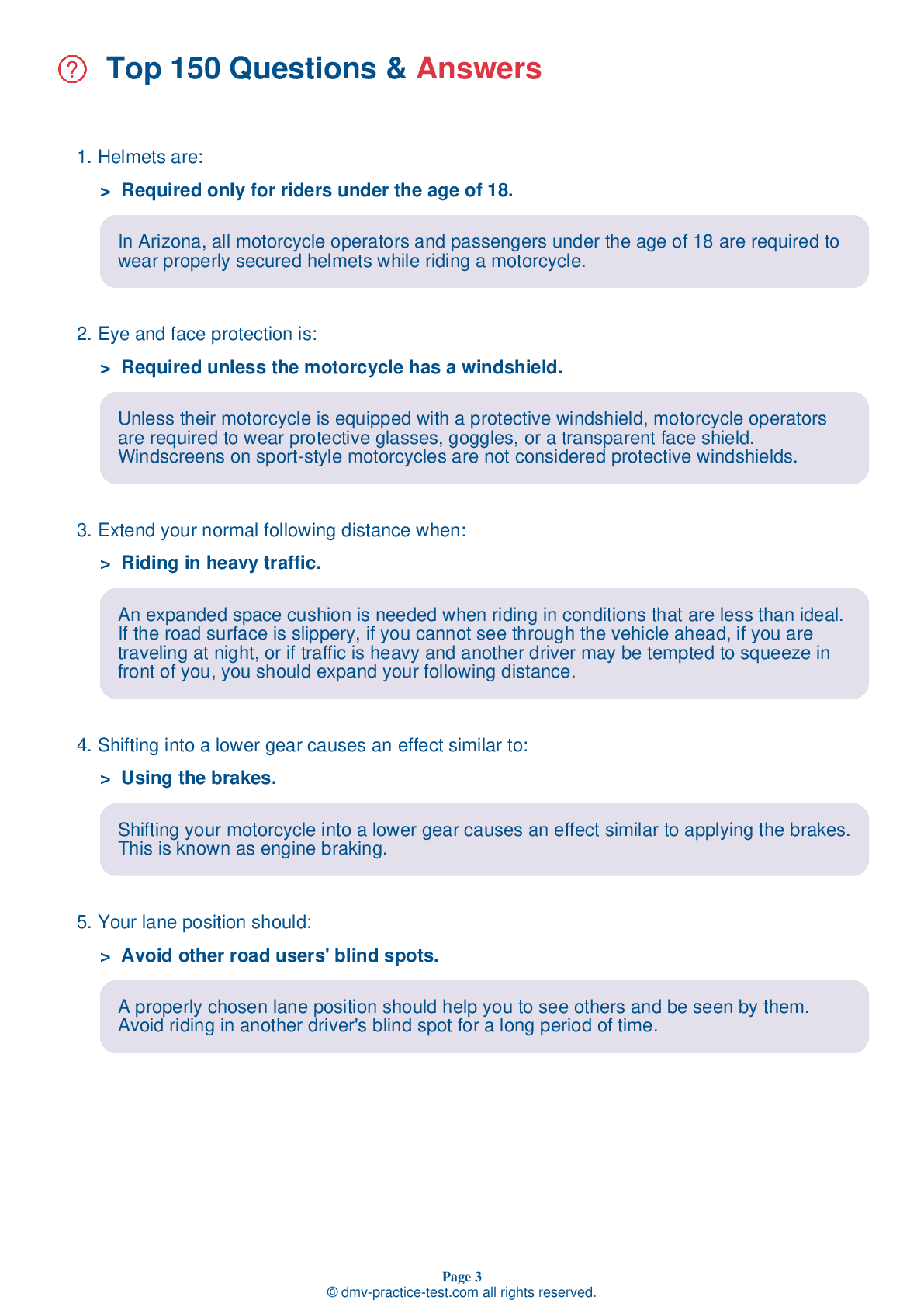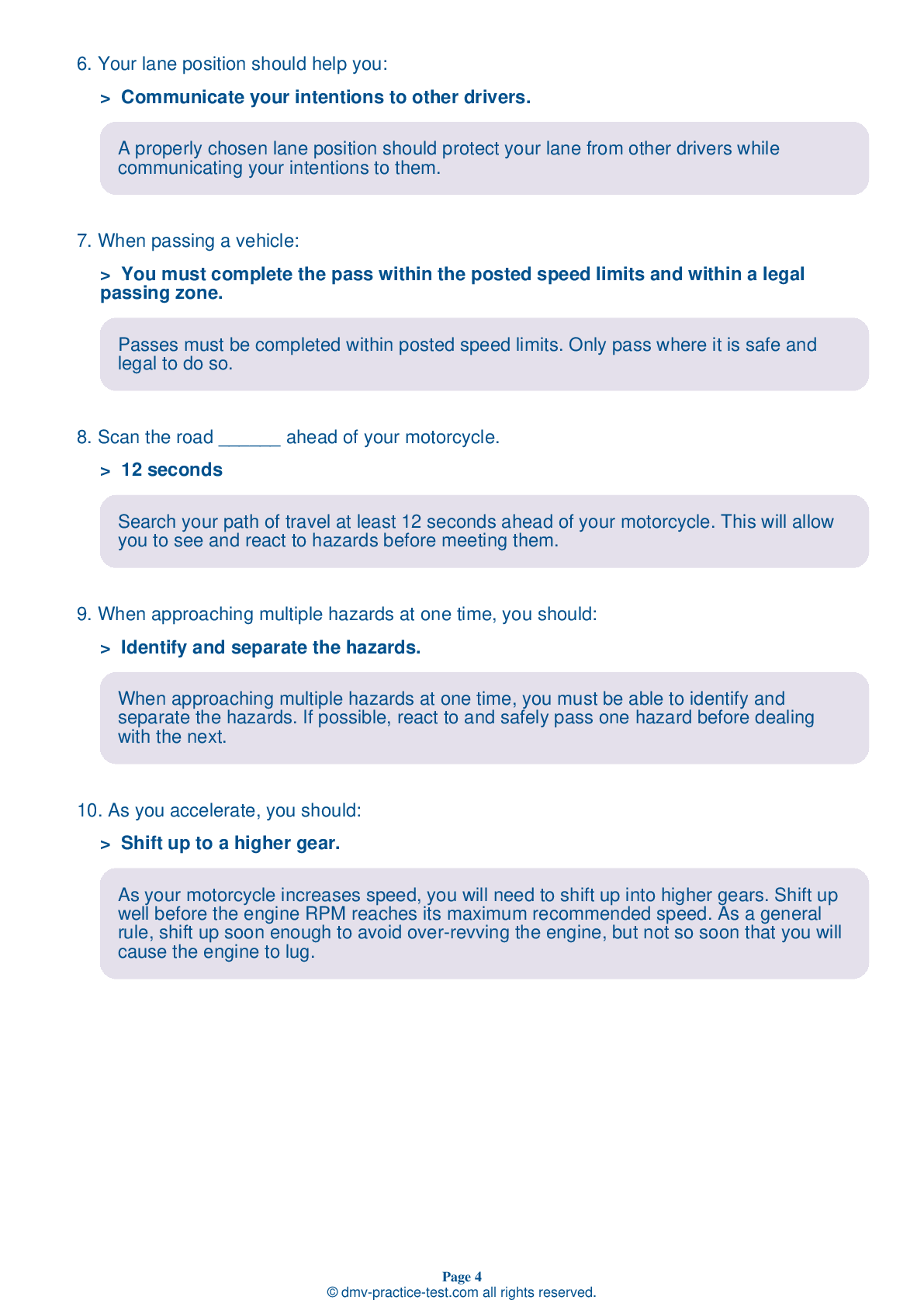Motorcycle Test | License AZ 2025 | FREE Online Practice! #12 Page 3 of 4
Take this FREE motorcycle test (license in AZ 2025) to check your knowledge of the road rules. To improve your results, download a motorcycle handbook online, study theory, and practice for free on our website. Still worried about how to get a motorcycle license in Arizona in 2025? Check our website for more sample tests, train as much as possible, and boost your grades!
17 . Road users should:
Always be aware of what is surrounding your vehicle. Be especially alert in areas with limited visibility.
19 . In general, when parked on the road, a motorcycle should be:
If parking in a parallel parking space next to a curb, it is generally best to position the motorcycle at an angle with the rear wheel to the curb. It should be noted that some cities have ordinances that require motorcycles to be parked parallel to the curb.
20 . When riding with a passenger, the operator should:
Because a motorcycle handles differently when under the weight of a passenger, an operator should maintain a larger space cushion when transporting another person.
21 . How can you regain control if your rear tire locks up?
To regain control of a locked rear wheel, the brake must be released. However, if you accidentally lock the rear brake on a good traction surface, you can keep it locked until you have completely stopped.
22 . When upshifting, the first thing you should do is:
When upshifting, you should first roll off the throttle as you squeeze the clutch lever. Next, lift the shift lever firmly as far as it will go. Smoothly ease out the clutch and roll on the throttle as you complete the gear shift.
23 . When changing lanes:
Motorcycles have blind spots just like any other vehicle. Always turn your head and look over your shoulder to check for traffic in your blind spot before changing lanes.
See the exact questions that will be on the 2025 Arizona DMV exam.
99.2% of people who use the cheat sheet pass the FIRST TIME
Jeneen was tired of paying $5/gallon. She got herself a scooter that required the motorcycle license. She studyed the motorcycle test cheat sheet and passed her test the next day!
Christopher tells us how he knew nothing prior to obtaining the motorcycle study guide, and he only got one question wrong because he clicked on the wrong answer by mistake.




